Boyce Thompson Arboretum (Superior, AZ)—Part 3
Today I’m wrapping up my visit to the Boyce Thompson Arboretum in Superior, AZ. If you missed the previous posts, please be sure to read them: Part 1 | Part 2.
In Part 2 we left off at the Cactus and Succulent Garden. The easternmost section is dedicated to plants from Baja California. If you’re not quite sure where you are, look for the tall boojum tree (Fouquieria columnaris). You can’t miss it! There are several juvenile boojums as well. Once you’ve seen one, you’ll recognize it anywhere.
Boojum tree (Fouquieria columnaris)
Boojum tree (Fouquieria columnaris)
Boojum tree (Fouquieria columnaris). The agave in the third photo is Agave cerulata ssp. subcerulata.
Here are two distinctive cactus species growing in the Baja California section:
Totem pole cactus (Lophocereus schottii var. monstrosus)
Senita (Pachycereus schottii)
Senita (Pachycereus schottii)
Continuing on the main trail beyond the Cactus and Succulent Garden, I soon arrived at a strange sight:
Ayer Lake
Yep, I did a double-take since I hadn’t expected a small lake. Clearly I hadn’t looked at the map! Here’s some information about Ayer Lake:
The main loop trail ends at Ayer Lake and I turned around. At this point I had been at the Arboretum for a good two hours. My plan was to head back to the car and continue on to Scottsdale, my home for the next two nights. And that’s what I did—eventually. It still took me another hour because I stopped many times to take more photos. The lighting was exceptional that day—high overcast—and I ended up with some of my favorite images of my entire trip.
Ferocactus gracilis ssp. gracilis
Agave murpheyi
Agave gigantensis. Yes, it a fairly large plant, but the species name refers to its home, the Sierra de la Giganta, in the southern Baja California peninsula.
Banana yucca (Yucca batata)
Cylindropuntia molesta. The species name made me chuckle because in Spanish it means “bother” or “annoy.” Yes, I suppose getting pricked by this cholla would annoy me!
The next set of photos is of a particularly nice grouping of whale-tongue agave (Agave ovatifolia). To me, this is one of the most beautiful larger agave species (mature specimens can be as wide as 5 feet).
Agave ovatifolia
Agave ovatifolia
Agave ovatifolia
Agave ovatifolia
More treasures from the Cactus and Succulent Garden:
Not labeled, but looks like a glaucous form of lady of the night (Cereus hildmannianus).
Juvenile pulque agave (Agave salmiana)
Agave asperrima and two nice specimens of Astrophytum ornatum
Tree prickly pear (Opuntia leucotricha)
Opuntia ‘Santa Rita’
Agave albomarginata, virtually never seen in cultivation
BACK: Agave ocahui var. longifolia FRONT: Agave gracilipes
Yucca rostrata
One of the most beautiful agaves I saw that day, sadly without a label. I’m fairly certain it’s Agave chrysantha, the golden-flowered agave, an Arizona native.
Agave chrysantha (?)
Another unlabeled beauty. Looks like a variety of Agave parryi, maybe var. neomexicana?
Agave palmeri
Opuntia ‘Santa Rita’ behind a rock covered with sulphur-colored lichen. I saw this type of lichen elsewhere in the Arboretum but couldn’t find more information about it.
Petrified rock
My final stop on the way back was the Smith Interpretive Center. This beautiful stone structure was built in 1925 as the original visitor center and is now on the National Register of Historic Places. The main attraction here are two attached display greenhouses. According to the Boyce Thompson Arboretum web site, “one greenhouse highlights cacti from around the world, and the other showcases succulent plants in other plant families” [1].
Smith Interpretive Center
I quickly walked through both greenhouses. They were very nice, and if they had been anywhere but here I would definitely have spent some time exploring them. However, by that point I had seen so much that I simply couldn’t take in anything else.
Display greenhouse
I snapped a few photos, which included this beautiful agave labeled Agave guadalajarana, and then returned to the car—happy but tired and saturated.
Labeled Agave guadalajarana but I’m not 100% sure this is correct. To me it looks more like the variety sold as ‘Confederate Rose’ (nobody quite knows the exact parentage of that one; possibly Agave isthmensis is involved).
Still to come: the Desert Botanical Garden in Phoenix. But first I’ll take a break for a few non-Arizona posts.
RELATED POSTS:





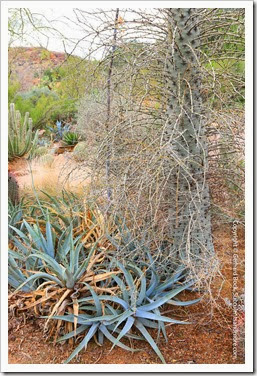

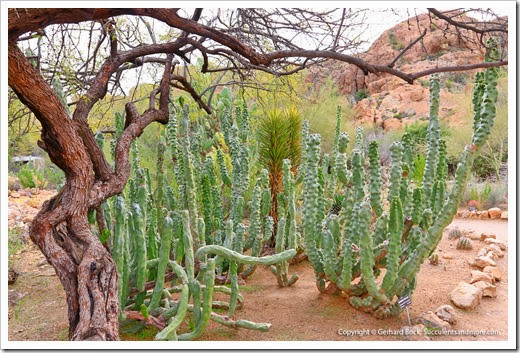


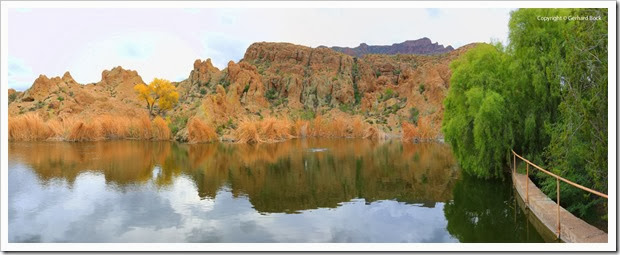



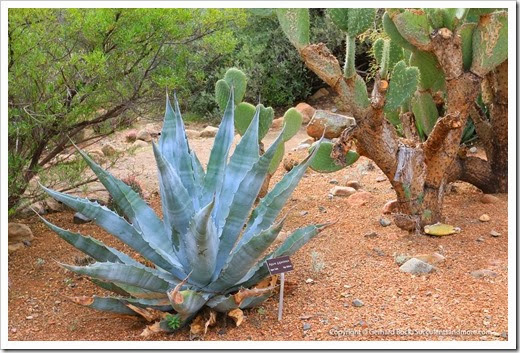
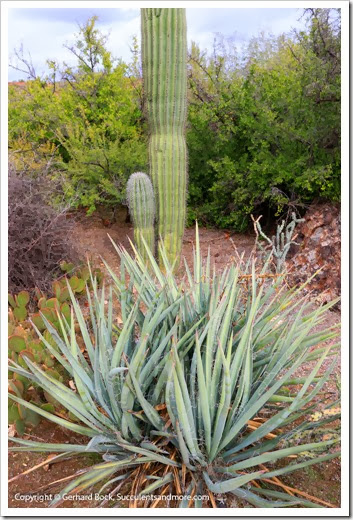


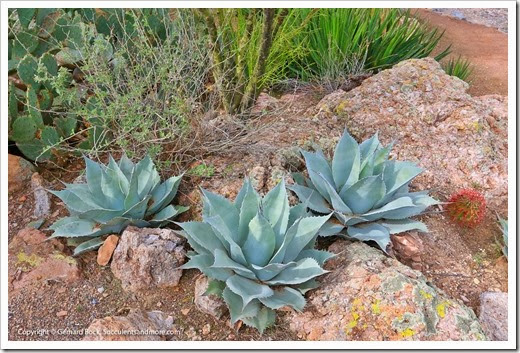
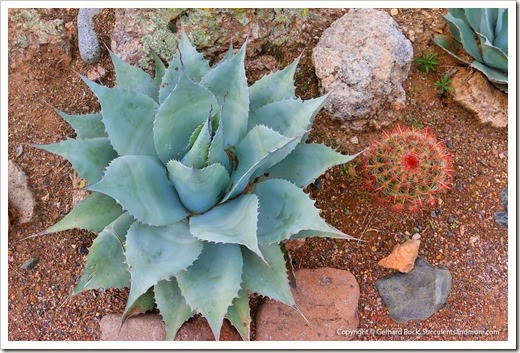
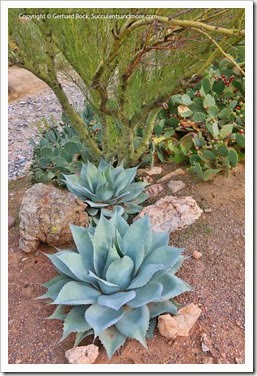




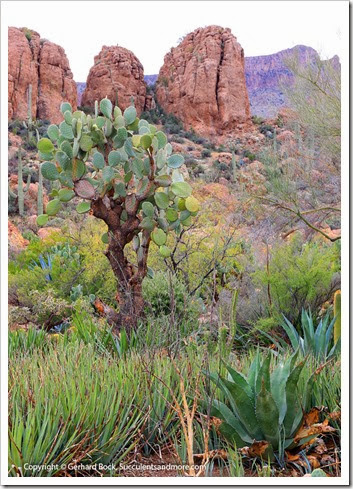



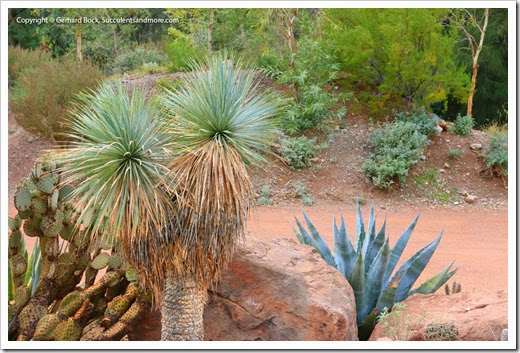







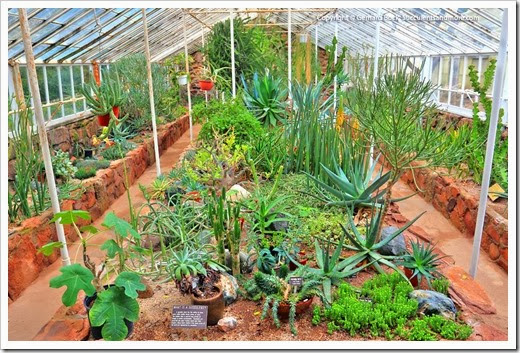

I can imagine how succulent overloaded you must have been by the end of your visit but my goodness what a way to be overloaded with! Stunning plants and sceneries as usual. In such a place where succulents grow happily outside you can forgive yourself for just breezing through those greenhouses. Great post as always!
ReplyDelete6 days was the right amount of time. If my trip had been longer, I would have needed a down day. Sleeping in, maybe hanging out in a used book store or two, a leisurely breakfast, lunch and dinner...
DeleteSimply wonderful, and the light was certainly playing nice for you. Cylindropuntia molesta is a name I'll be giggling about for awhile.
ReplyDeleteI forgot to give kudos to the folks at the Boyce Thompson Arboretum for labeling so many plants. Quite an undertaking, considering how many plants there are!
DeleteI think one of our next roadtrips will need to be to the southwest. There's too much beauty there. Some of those Agaves are crazy (and beautiful)!
ReplyDeleteA SW road trip is a great idea! Be forwarned though: You might not want to leave :-).
DeleteCan you identify the smaller plants acting as "ground cover" in this pic? It's a neat effect. Thanks. http://lh4.ggpht.com/-CyRkObamaTU/Us9fc6jF-OI/AAAAAAAAzkU/WgvdUY8J2VU/s1600-h/131204_BoyceThompsonArboretum_2632.jpg
ReplyDeleteThey're aloes but I can't really tell you which species or hybrid. Aloe hemmingii, a fairly common aloe, would work as a low-growing groundcover like that.
Delete